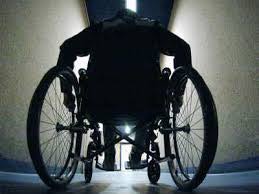As researchers who are primarily concerned with the welfare and experiences of all students at historically Black colleges and universities (HBCUs), we are excited to see that more research is focusing on Black and non-Black students at these venerable institutions. While this is particularly noteworthy, we have to be mindful to be attentive to the intersecting identities of students at HBCUs.

Specifically, Section 504 of the Rehabilitation Act of 1973 and Americans with Disabilities Amendment Act of 2008 (ADA) have contributed to the increase in the number of individuals with disabilities who are enrolled in higher education. These federal laws contain multiple provisions that outline the responsibility of college officials receiving federal funds to provide reasonable accommodations to individuals who meet the eligibility of having a disability.
For example, results of the National Longitudinal Transition Study-2 (NLTS-2, 2010) indicate there was a 12 percent increase in Black and a 10 percent increase in White college students with disabilities enrolled in four-year institutions. While the enrollment of Black students with disabilities has increased in recent years, the college graduation rate of Black students with disabilities remains only half of that of their White counterparts. There is evidence that the academic challenges and establishing effective social supports impact the academic performance of students with disabilities at HBCUs and beyond.
Faculty members and universities must understand how the intersection of race/ethnicity and disabilities may intersect to manifest themselves in a variety of ways. In some cases, disabilities are visible, while other disabilities are invisible. While an orthopedic impairment may be noticeable upon meeting a student, a minor visual impairment may not be as noticeable. Another example would be the growing number of African-American college students with identified learning disabilities. Despite the ethnic background of the students with disabilities, extensive research indicates that students with learning disabilities report having difficulty with reading, writing, spelling, and auditory comprehension.
College students with learning disabilities may also exhibit difficulty with executive functioning, which can impact organization, time management, and attention to detail in an assignment. The impact of a learning disability on the student is further complicated by its intrinsic neurological nature, which often causes the disability to remain an “invisible disability” that is hidden from university faculty members. Faculty members often doubt the validity of the disability and may withhold mandated academic accommodations. These academic challenges are compounded when one considers that Black students with disabilities are members of two historically marginalized groups, thus may experience additional challenges when navigating the college experience.
There is reason to believe that HBCUs may offer the appropriate balance of academic rigor and social support required to assist Black students with disabilities in matriculating toward postsecondary success.















